
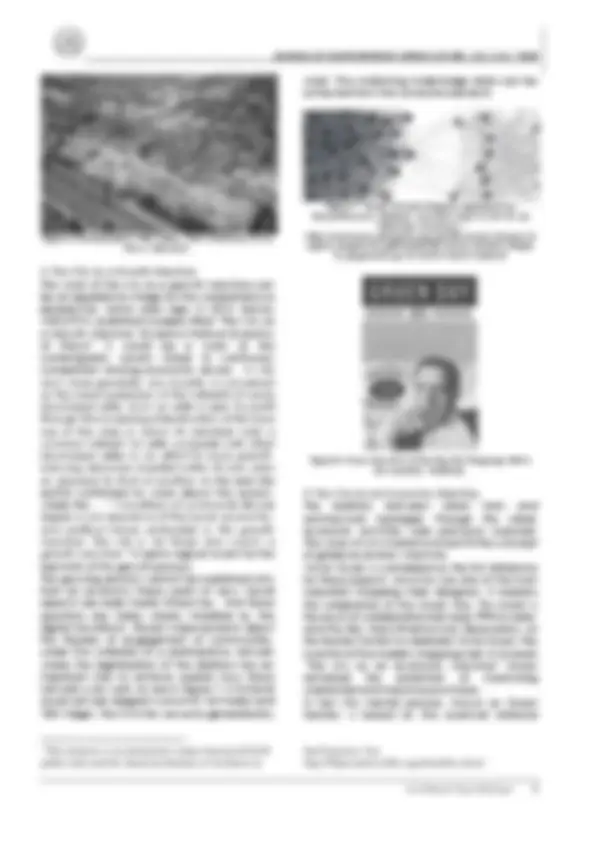
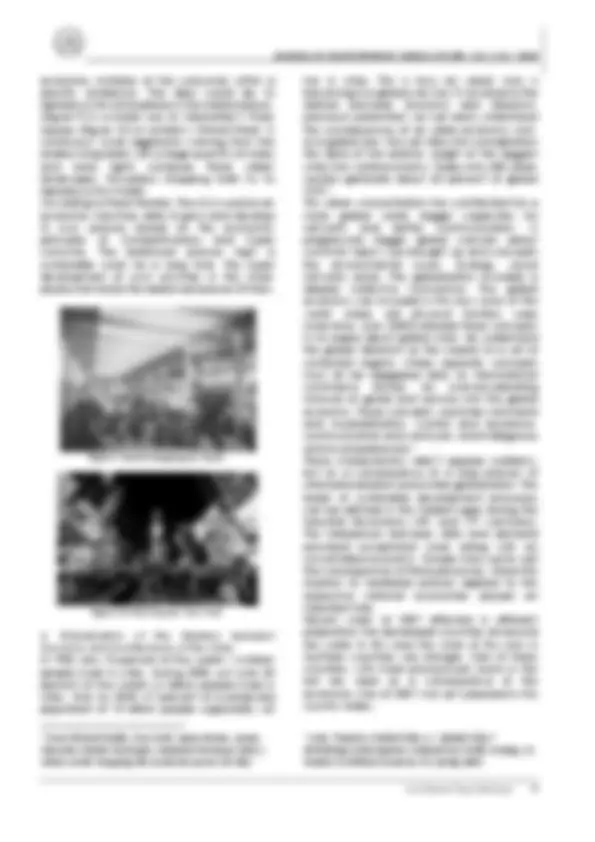
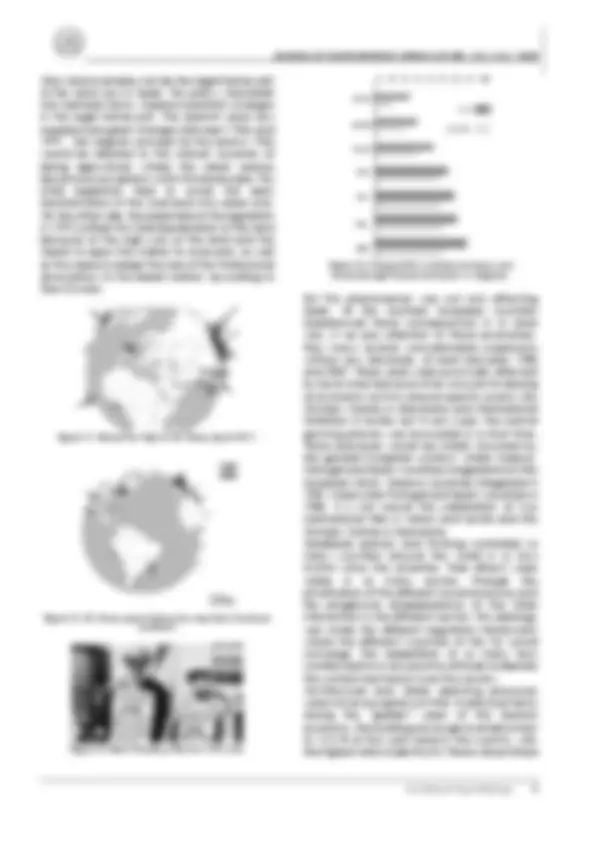
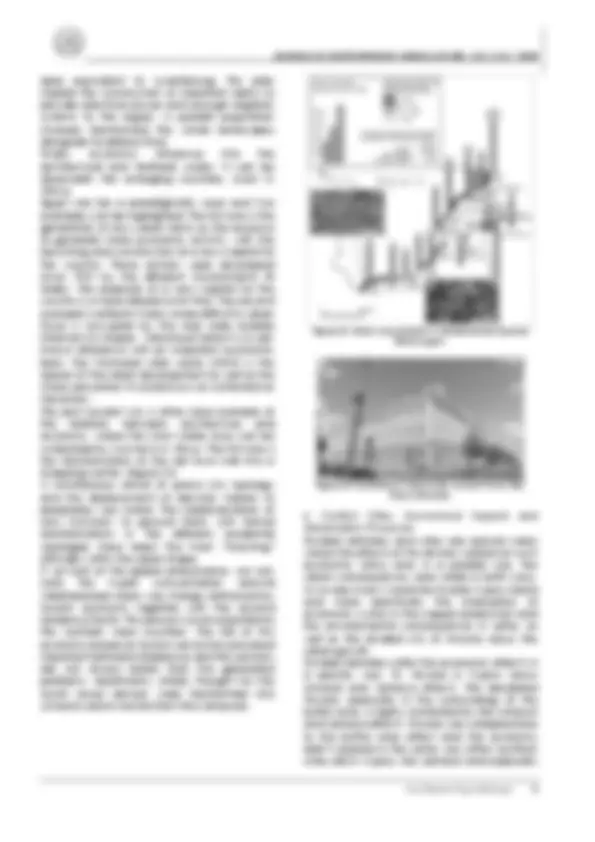
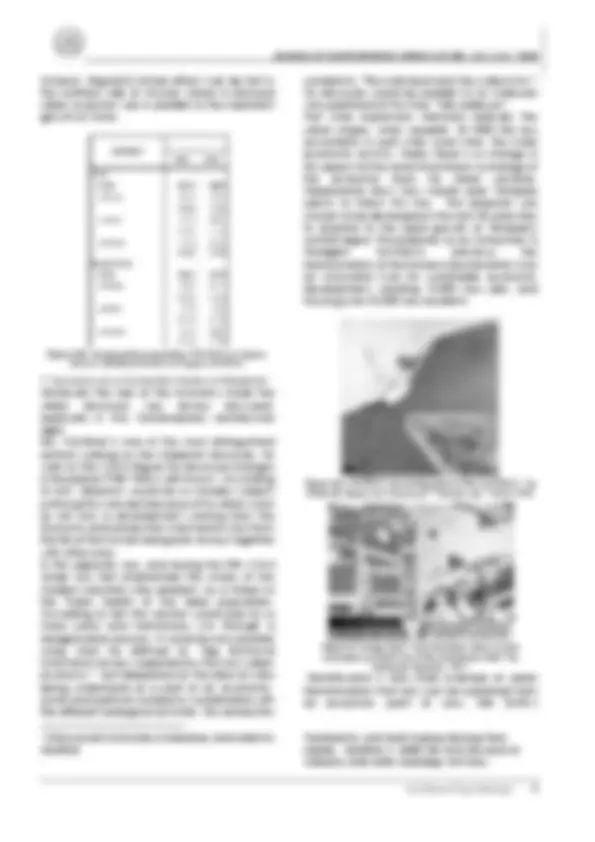
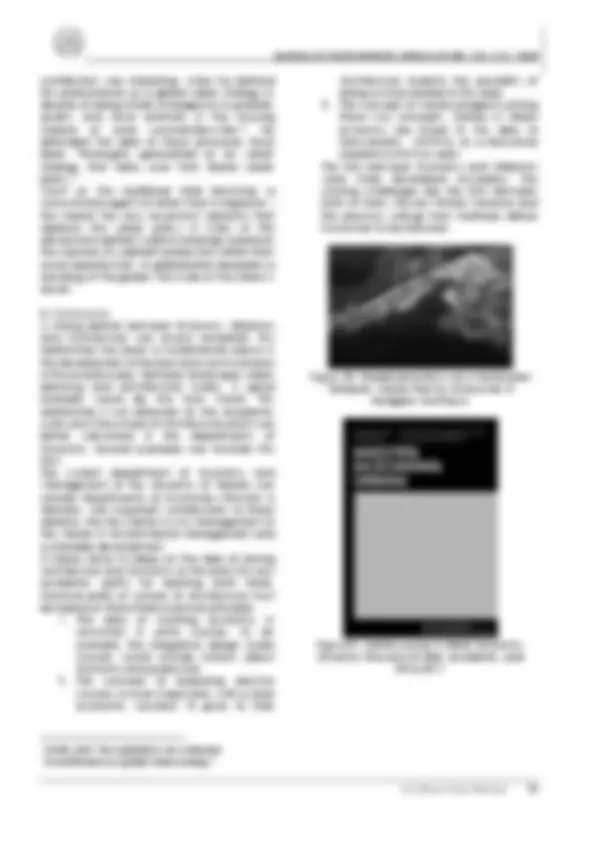


Study with the several resources on Docsity

Earn points by helping other students or get them with a premium plan


Prepare for your exams
Study with the several resources on Docsity

Earn points to download
Earn points by helping other students or get them with a premium plan
Community
Ask the community for help and clear up your study doubts
Discover the best universities in your country according to Docsity users
Free resources
Download our free guides on studying techniques, anxiety management strategies, and thesis advice from Docsity tutors
Some Notes about Architecture, Urbanism and Economy
Typology: Essays (university)
1 / 11

This page cannot be seen from the preview
Don't miss anything!







2018 , Volume 2 , Number 2 , pages 1 – 11
University of Genova, Italy E mail: jmpmadrigal@gmail.com
https://doi.org/10.25034/ijcua.2018. www.ijcua.com Copyright © 2017 Contemporary Urban Affairs. All rights reserved.
1. Introduction Architecture and urban planning as human activities, are necessarily linked to Economy. The economical component is present in their respective design processes, since they need funds to be developed. There are not urban forms without relations with economy, but at the same time it is difficult to understand the economy without an urban basis supporting it. Urban societies were the perfect location for sharing the first trading experiences. That is the reason why cities reflected this relation since the first ages. There are a lot of examples through History: Agoras (Figure 1), Forums, Souks and Medieval markets (Figure 2) are good paradigms of these relations. Their respective different cultures are beyond these simple urban forms. Galleries and arcades during the 19 th^ were in fact the precedents of the 20th^ mall centers, meanwhile the Central market typologies arose in the main cities of the planet. All these typologies provoked different reactions and they were engines of new territorial or urban developments. Shopping centers proliferated during the second half of the 20th^ century. They can be considered as one of the main causes of the urban sprawl, as a tool linked to other phenomena like the compounds, the large
Article history: Received 2 August 2017 Accepted 10 August 2017 Available online 12 October 2017 Keywords: Architecture; Urban economy, Historical reflections; Urban sprawl.
urban sprawl urbanizations with detached typologies and golf clubs. Development of the cities and antrophization of territories cannot be understood without economic reasons. Both of them can be explained through the Economic history studies. In fact, Tony Garnier based all his urban design of the new cities concept on the economic activities to be developed as the engine for them. (Fig 3 and 4) Figure 1. Agora in Athens.Reconstruction by G. Rehlender. From: Spamers illustrierte Weltgeschichte (Spamer’s illustrated history of the world) vol. 1, by O. Kaemmel and R. Sturmhoefel, Leipzig, 1893. Figure 2. Market place, Norwich. 1854. From: Norwich Museum & Art Gallery. Figure 3. Tony Garnier, Une Cité industrielle. Ètude pour la construction des villes, 1917. Figure 4. Tony Garnier. Proposal for a French city of 35. inhabitants. The harmonious growing processes were based on a balanced relation between Territories and economies settled on them. The break of this balance provoked in each case anomalous reactions transformed into economic crises or city abandonments by appearing in the contemporary times the shrinking processes. Detroit city was largely studied in the last decades(Adedeji & Arayela, 2017). These phenomena cannot only be understood from the urban scale but also they can be upgraded to territories. Cities are the “natural” scenario for developing human activities, even the economic ones. The interrelation among the several cities needs this territorial support, as the basis for the territorial antrophization. They cannot be understood without the economic reasons beyond that. In fact Factory-cities, or cities with a dominant economy activity based on such specific production, like mining or cars are repeating cycles alongside the History. Detroit is a clear contemporary example for that. (Figure 5 and 6) This is why we can affirm that Economy is an important factor for generating urban and territorial forms. Figure 5. Detroit. From: Detroit by Air, by Alex S. MacLean.
economic mistakes of the consumer within a specific ambience. The idea would be to reproduce this atmosphere in the market places, (Figure 9) in a similar way to Manhattan’s Times Square (Figure 10) or London’s Oxford Street. A continuous visual aggression coming from the endless long roads with a large quantity of stores and neon lights compose these urban landscapes. Nowadays shopping malls try to reproduce this model. According to these theories, the city is used as an economic machine, able to grow and develop its own process based on the economic principles of Competitiveness and hyper consume. The balanced process kept a sustainable vision for a long time. The hyper development of such activities in the chain production broke the balanced process till then. Figure 9. Quartz shopping by Gruen. Figure 10. Times Square. New York.
4. Globalization of the Relation between Economy and Architectures of the Cities In 1900, only 10 percent of the world's 1.6 billion people lived in cities. During 2000, just over 50 percent of the world's six billion people lived in cities. And, by 2050, 67 percent of a projected population of 10 billion people supposedly will (^2) From Richard Dobbs, Sven Smit, Jaana Remes, James Manyika, Charles Roxburgh, Alejandra Restrepo (2011): Urban world: Mapping the economic power of cities live in cities. This is how an urban crisis is becoming in a global crisis too. If we observe the relation between Economy and Urbanism, previously presented, we can easily understand the consequences of an urban-economy crisis, as a global one. We can take into consideration the data of the relative weight of the biggest cities into world economy. Today only 600 urban centers generate about 60 percent of global GDP.^2 This urban concentration has contributed for a more global world, bigger capacities for networks and better communication. A progressively bigger global concern about common topics was brought up and concepts like environmental issues, Ecology, social networks arose. The globalization included a deeper collective conscience. The global economy was included in this new vision of the world where old physical frontiers were overcome. Luke (2003) referred these concepts in his paper about global cities. He understood the global Urbanism as the creator of a set of contested regions where opposite concepts must all be rejiggered daily as transnational commerce dumps an ever-accelerating turnover of goods and services into the global economy. These concepts would be command and insubordination, control and resistance, communication and confusion, and intelligence and incomprehension.^3 These characteristics didn’t appear suddenly, but as a consequence of a long process of internationalization and a later globalization. The break of sustainable development processes can be defined in the Modern ages during the Industrial Revolutions (18th^ and 19th^ centuries). The imbalances between offer and demand provoked exceptional crises along with an uncontrolled economy. Europe knew quite well the consequences of these processes, where the irruption of neoliberal policies applied to the respective national economies played an important role. Recent crash of 2007 affected in different proportions the developed countries all around the world. In this case the vision of this crisis in Southern countries was stronger. Most of these countries, with more pronounced visions in the last ten years as a consequence of the economic crisis of 2007, not yet surpassed in this country today. (^3) Luke, Timothy: Global Cities vs. “global cities:" Rethinking Contemporary Urbanism as Public Ecology, in Studies in Political Economy 70, Spring 2003
One clear example can be the legal framework of the Land Law in Spain. This policy, translated into territorial terms, implied important changes in the legal framework. The Spanish Land Law experienced great changes between 1956 and
Figure 19. Comparative evolution between Spain and Ireland bubble effects. Source: Credit Suisse studies unit. It is important to remark that several characteristics were always kept during these crises: Countries with very low interest rates and low to moderate tax rate as well as high loan-to- value ratios have the potential to experience large property bubbles. The physical consequences if that are always visible throughout the respective landscapes and territories.
5. Economy and Landscape Transformations Economy has even influenced in other scales and spaces. Landscape transformations are usually based on economic decisions. Mediterranean terraces obsolescence is linked to the unfeasibility of economic processes on them. (Figure 20) It provoked the ruined landscapes of important territories where other purposes were got through agricultural activities. Geologic and ecological stability as well as fixing populations were parallel goals to be achieved. Figure 20. Abandoned terraces in Alto Douro_._ Plots redistribution in Galician territories, commonly known as re-parceling brought up important landscapes transformations in the last 50 years. (Figure 21) These processes consisted of new property distributions to easy better economic results in the agriculture production. Regional economy is based in this case on a family scale, rather than major ones. Figure 21. Plots redistribution in Galicia Spain 1964_._ We can realize important changes in the Argentinian Pampa landscapes when the irruption of the soy within a scenario mainly dominated by the wheat. (Figure 22) Figure 22. Argentinian Pampa region with wheat 2015. The optimization of economic results was the main factor for a new strategy in Badajoz during 1950´s and 60´s. Badajoz Plan was able to transform an important area (196943 Ha) and 50 new towns. The total implementation was an
area equivalent to Luxembourg. This plan implied the construction of important dams to provide electrical power and enough irrigation systems to the region. A parallel population increase transformed the whole landscapes alongside Guadiana River. Finally, economy influences into the architectural and territorial scales. It can be observedin the emerging countries, even in Africa. Egypt can be a paradigmatic case and two examples can be highlighted: The first one is the generation of new urban forms as the resource to generate more economic activity, with the launching and construction of a new capital for the country. These actions were developed since 1957 by the different Governments till today. The proposal of a new capital for the country is a clear reference for that. The second example is settled in Cairo where 60% of its urban tissue is occupied by the real state bubble informal city shapes. Manshayet district is a well- known reference with an important economic basis: the Municipal solid waste (MSW) is the reason of the urban development as well as the chaos provoked. Its existence is as contested as necessary. The post socialist city is other clear example of the relations between architecture and economy, where the most visible issue can be symbolized by two facts in Vilnius. The first one is the transformation of the old town hall into a shopping center. (Figure 24) A simultaneous arrival of sprawl city typology and the displacement of decision makers to peripheries was noted. The implementation of new functions to ground floors with formal transformations in the different residential typologies have been the most “shocking” attitudes within the urban shape. If we look at the global phenomena, we can note the hyper concentration around Mediterranean basin was strongly reinforced by tourism economy together with the second residence factor. This process is even exported to the southern med countries. The fall of this economy based on tourism sector has provoked important territorial imbalances and the solutions are not always better than the generated problems. Apartments, initially thought for the tourist never arrived, were transformed into university dorms too far from the campuses. Figure 23. Water consumption in Mediterranean Spanish littoral region. Figure 24. Gediminos 9 mall center, ancient Town Hall, Vilnius Lithuania.
6. Conflict Cities: Economical Aspects and Urbanization Processes Divided territories and cities are special cases where the effects of this division carried on such economic status and, in a parallel way, the urban consequences were visible in both ways. As a case study I would like to refer Cyprus Island and more specifically the interruption of economic cycles in the copper production and the environmental consequences in Lefke, as well as the divided city of Nicosia versus the urban growth. Divided territories suffer the economic effects in a specific way. Ex. Nicosia in Cyprus versus Limassol and Larnaca effect). The desolated Nicosia, especially in the surroundings of the buffer zone, is highly contrasted by the Limassol and Larnaca effects. Nicosia was collapsed due to the buffer zone effect and the economy didn’t expand in the same way other southern cities did in Cyprus, like Larnaca and especially
contribution was interesting, when he defined this phenomenon as a global urban strategy in despite of being initially emerged as a sporadic quaint, and local anomaly in the housing markets of some commander-cities”^5. He defended the idea of these processes have been “thoroughly generalized as an urban strategy that takes over from liberal urban policy.” Much as the neoliberal state becomes a consummate agent of rather than a regulator – the market the new revanchist urbanism that replaces the urban policy in cities of the advanced capitalist world increasingly expresses the impulses of capitalist production rather than social reproduction. As globalization bespeaks a rescaling of the global, the scale of the urban is recast.
8. Conclusions A strong relation between Economy, Urbanism and Architecture was always remarked. This relationship has been a fundamental piece in the development of the best and worst scenarios in the several scales, Territorial, landscape, urban planning and architectural scales. A good example would be the Suez Canal. This relationship is not reflected on the academic curricula in the schools of Architecture and it was better welcomed in the departments of Economy, Several examples can illustrate this fact: The current department of Economy and Management of the University of Ferrara was named Dipartimento di Economia Istituzioni e Territorio, with important contributions to these relations, like the Master in city management or the Master in Environmental management and sustainable development. It makes sense to deep on the idea of joining Architecture and Economy as the basis for new academic paths for learning both fields. Eventual paths of schools of Architecture must be based on these three eventual principles. 1. The idea of insetting economy in outcomes in some courses. As an example, the integrative design studio courses would include notions about Economy and production 2. The concept of proposing elective courses, or even major ones, with a clear economic vocation. IE gives to their (^5) Smith, Neil: “New globalism, new urbanism :”Gentrification as a global urban strategy ” Architecture students the possibility of doing a minor related to this area.
Acknowledgments This research did not receive any specific grant from funding agencies in the public, commercial, or non-for-profit sectors. References Adedeji, J. A. & Arayela, O. (2017). Urban Renewal Strategies and Economic Growth in Ondo State, Nigeria: A Case Study. Journal of Contemporary Urban Affairs (JCUA), 2(1), 76-